Pima cotton is a specific cotton that is a prize for its long fiber length, which comes in a soft, long-lasting, and elegant fabric. Cotton is known after the Pima citizen American tribe who first plowed Cotton in the Southwest United States.
Moreover, it is grown in select regions, such as the United States, Peru, and Australia. It is named for its silky soft feel, reliability, and luxurious quality. Pima cotton is considered a premium quality cotton due to its long fibbers, which reduce the number of ends that need to be spliced together in the spinning process.
It provides a smoother and firmer yarn that is less likely to be a pill or wear thin. People who made give reviews that Pima cotton has a 50% more expectation of life than other traditional cotton products and is also suitable for people with delicate skin.
The top quality of the Cotton makes it worthwhile for use in premium bedding, towels, and clothing items, and it is often sought after by consumers for its softness and durability. Additionally, the limited availability of Pima cotton and the extra care needed during its production results in a higher cost than regular Cotton.
In this Blog Post, I explained Pima cotton, how it is prepared, where it is from, and all other aspects. You will get the more necessary information for your purpose. Stay on it; you should have to read it carefully.
Table of Contents
How is Pima Fabric Made?

The apparent difference in Pima cotton manufacturing is that it needed hand-picking for better outcomes. Mostly cotton agriculturalists in the market utilize heavy machines to poke away the soft cotton ball and then sort out the cotton seeds from the thread.
Apart from handpicking, more part of the production process looks slightly similar to how the fabric is manufactured. Since collecting by hand is such a complex process, all Cotton was harvested for centuries.
Step 1 First, a cotton ball gets tight into a bundle and then moves to the opening corner for production only. Heavy machinery removes the bundle and disperses all cotton balls here and there.
Step 2 After it, another heavy mixing machine ready the balls for filing, which is a method that clears up the fibers and sets them into a roughly vertical cluster, mainly known as tows.
Step 3 Furthermore, this mixing machine converts tows into a transparent rope-like fiber without any leftovers, called carding.
Step 4 Then, the rope-like fiber is transferred to another machine for combining, which wipes out all the dirt on the fabric.
Step 5 Moreover, these ropes are put into the spool and transferred to the other factory machines. Then finally, convert it into yarn by the process of spinning.
Step 6 In the last, these yarns are moved to weaving factories for knitted into fabric.
Pros of Pima Cotton:
Softness: Pima cotton fibers are more extended and finest than traditional cotton fibers, resulting in a softer and more luxurious feel.
Durability: The longer fibers of Pima cotton make the fabric more resistant to pilling and wear, which means the material will last longer
Moisture absorbency: Pima cotton is highly absorbent, making it a good choice for clothing and bedding that will keep you cool and dry.
Hypoallergenic: Pima cotton is hypoallergenic and can be the perfect choice for those with delicate skin.
Versatility: Pima cotton is available in various colors and styles, making it a versatile fabric for many applications.
Cons of Pima Cotton:
Cost: Pima cotton is more expensive than traditional Cotton, which can make it a less affordable choice for some consumers.
Wrinkling: Pima cotton, like all cotton fabrics, is prone to wrinkling, which can be a drawback for some consumers.
Care requirements: Pima cotton requires careful washing and ironing to maintain its softness and appearance.
Pima Fabric Impact the Environment:
Most of the time, Cotton is produced in bulk quantities by heavy machines worldwide. Commonly Pima fabric is plucked by hand, which helps to keep the cohesion of the cotton fabric.
However, with the help of this way, it lessens waste pollution and less environmental impact. Additionally, the production of Pima cotton and the creation of Pima cotton fiber can remarkably impact the environment.
Here are some of the critical ways Pima cotton can affect the environment:
Water Usage: Cotton is one of the most water-intensive crops to grow, and the production of Pima cotton is no exception. It can lead to water scarcity issues in areas with limited water resources.
Chemical Use: Cotton is often treated with various chemicals such as pesticides, herbicides, and fertilizers. These synthetics can ruin the environment, contaminate water and soil and potentially cause harm to wildlife.
Energy Use: Making Pima cotton, like all Cotton, requires significant energy to grow, harvest, process, and manufacture the fabric. This energy use contributes to greenhouse gas emissions and contributes to climate change.
Waste: Cotton production generates significant waste, including cotton gin and textiles from clothing production. This waste can contribute to landfills and other environmental issues.
However, some steps can be taken to mitigate the negative impact of Pima cotton production on the environment. For example, using sustainable farming practices, such as reducing chemical usage and conserving water, can help minimize the environmental impact of Pima cotton production.
Additionally, using eco-friendly processing and manufacturing methods, such as utilizing inexhaustible energy sources and reducing misuse, can help reduce the environmental impact of Pima cotton fabric production.
Where is Pima Cotton Grown?
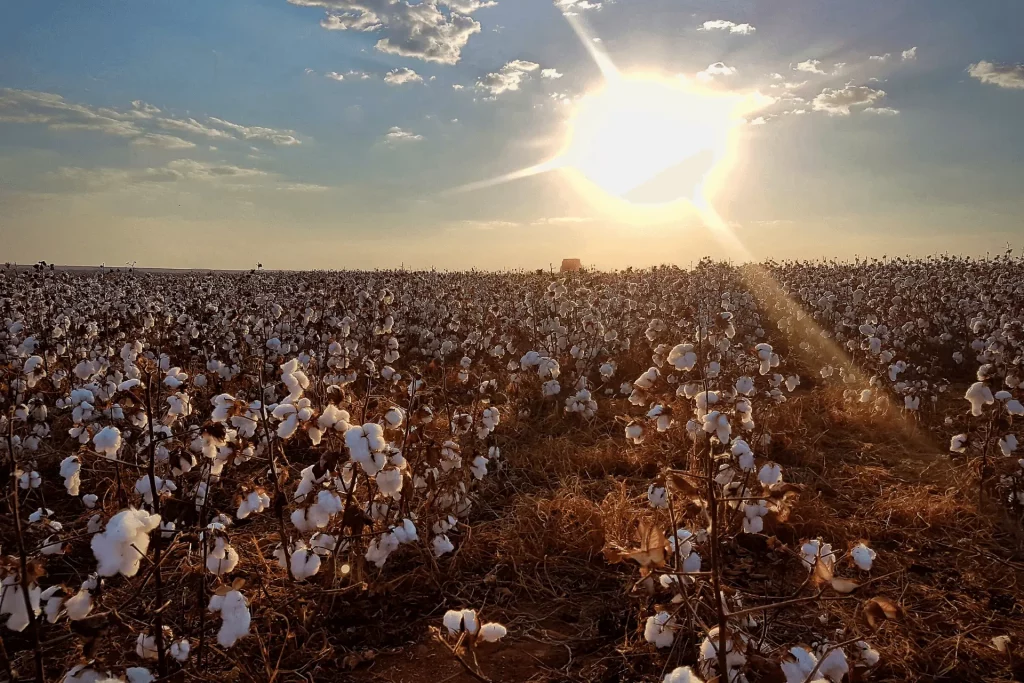
Pima cotton is a kind of Cotton that is grown fundamentally in the Southwestern United States, as well as in Peru, Australia, and other countries. The Cotton is named after the Pima Indian tribe, who first cultivated the plant in the U.S.
Pima cotton is famous for its long, strong fibers and fleece-like silky feel. The cotton plant thrives in warm, arid climates and requires a long growing season with plenty of sunlight, which makes the Southwestern U.S. an ideal location for growing it.
Moreover, Cotton comes from Peru and Australia, where the warm and arid climates are similar to those in the Southwestern U.S. It is a most permeable fabric. However, Pima and Egyptian Cotton are extra-long staple Cotton, and almost both share the same qualities, so they are much more remarkable.
Additionally, Turkish Cotton is long-length fabric cotton and shares the same qualities as Pima cotton, but Pima is a premium kind of Cotton. They are spongy and long-lasting. It is also a splendor fabric but not a replacement for Pima cotton.
Types of Pima Cotton:
The types of Pima cotton you select will rely on your specific needs and personal liking, as well as the end use of the Cotton.
Here are various types of Pima cotton are the following:
Supima Cotton:
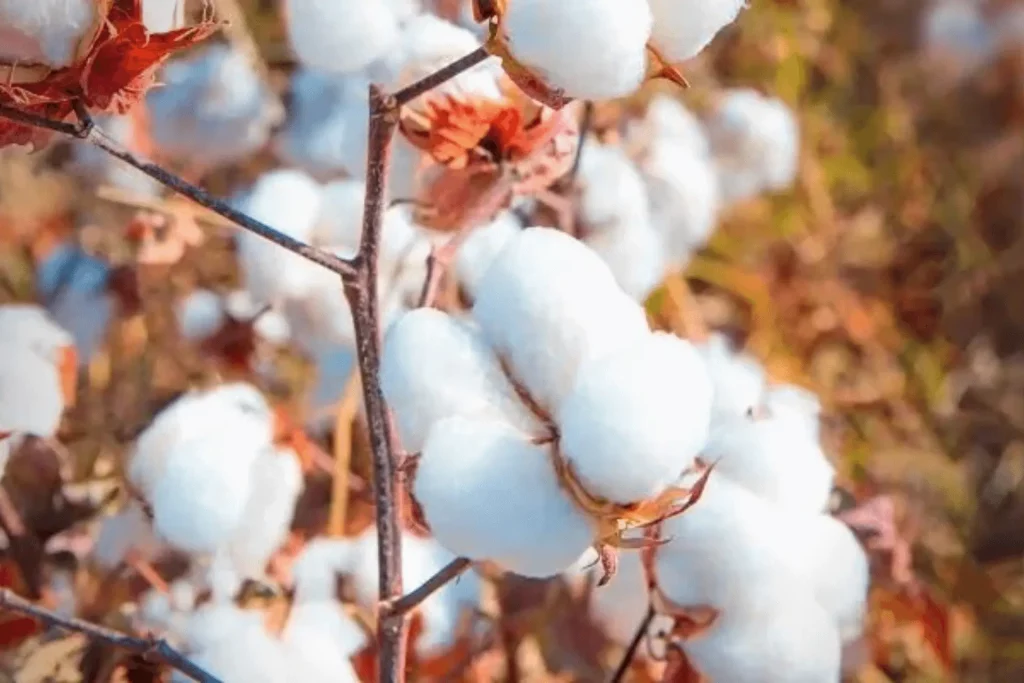
This is exclusively different from Pima cotton grown in the United States. Supima cotton is famous for its long, strong fibers and exceptional quality. The reason for the move to Supima cotton instead of Pima cotton is their quality standards.
However, they both have similar stuff, but actually, Supima cotton is authenticated by the mediator. Primarily people who produce Supima cotton go through the perfect use of safe, feasible, and organic processes to plant their hunting crop.
Most people prefer Supima cotton instead of another form of Cotton because if you make more durable stuff to save their brand awareness, all the things are done by putting in mandatory efforts.
Supima Cotton Vs. Pima Cotton:
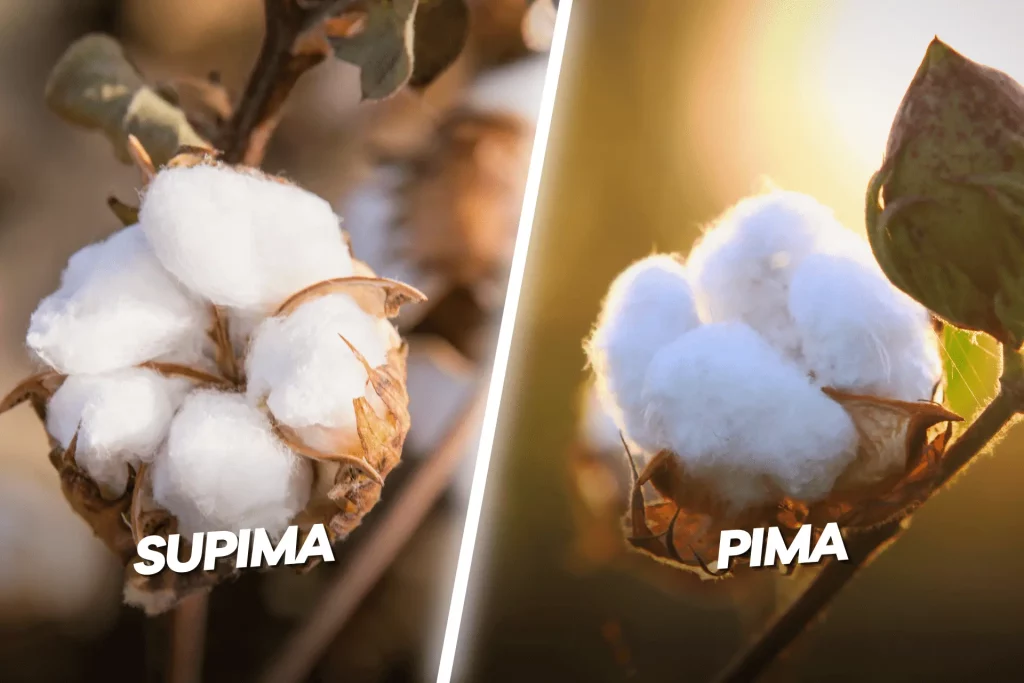
| Supima Cotton | Pima Cotton |
|---|---|
| California, Arizona, Texas, and New Mexico | Australia, Peru, and southwestern America |
| Stronger than another type | Comparatively stronger |
| More Durable | Less Durable |
| Shiny extra-softer fleece like | Less Durable |
- It only plants in the United States.
- It is. incredibly calm and fluffy and made of sheets
- It has reliable quality
- Most long-lasting and fleece cotton is available
- It is costlier than the Egyptian type.
Egyptian Pima Cotton:
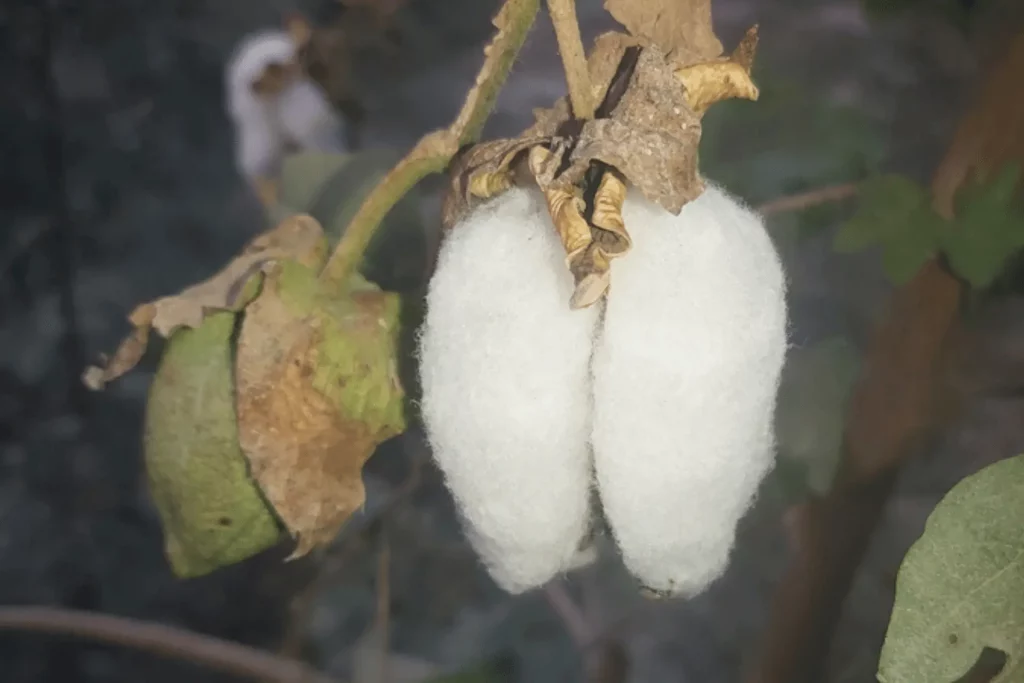
This kind of Pima cotton is found in Egypt in the Nile Delta and is recognized as the finest quality and most luxurious type of Cotton in the world. As for its best quality standards, Egyptian Cotton is also admired for its sustainability.
These types of cotton farmers utilized traditional, feasible farming ways. They kept away from harmful chemicals, making it an environment-friendly selection for users seeking natural and worthwhile products.
Moreover, Egyptian Cotton is the most desirable stuff, famous for its quality, lap of luxury, and feasibility, making it a popular selection for users who demand the perfect textiles and clothing for home.
- Comparatively, Fleece stuff and Long-lasting.
- It is well ordered than other forms of Cotton.
- Perfect Quality standards (If you are seeking something appreciable)
- Nearly 90% of this Cotton is not found initially.
Peruvian Pima Cotton:
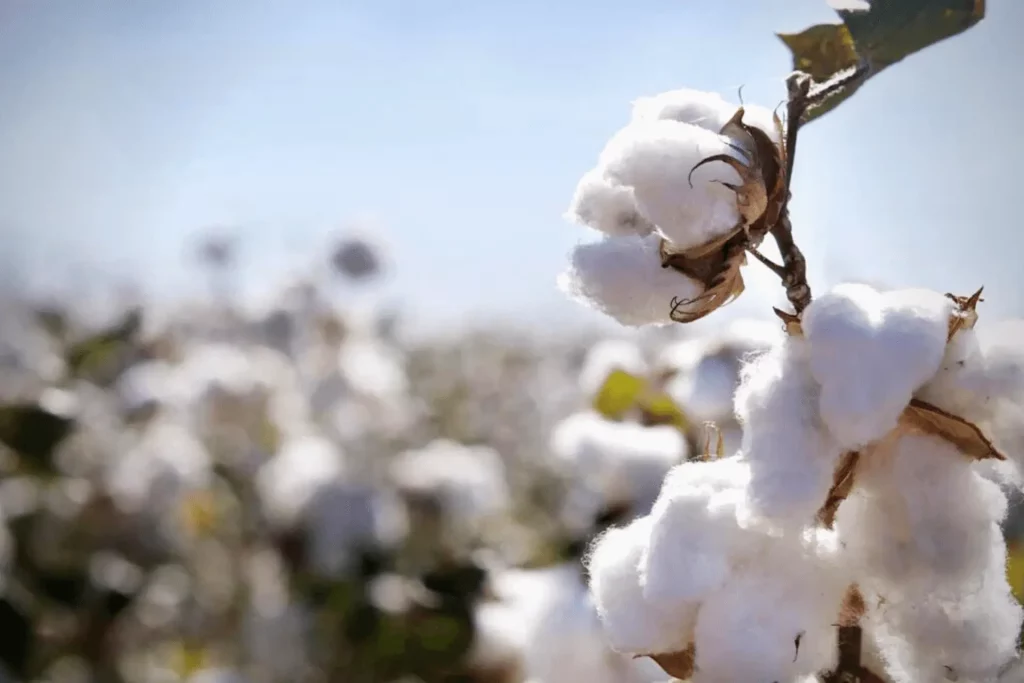
This type of Kind Pima cotton is found in the Northern side of Peru and is famous for its shiny white shade and elegant fleece texture. It is also used in making soft T-shirts for men. Moreover, it is even best for sensitive skin due to the non-presence of artificial fertilizers (potassium Sulphate).
Organic Pima cotton:
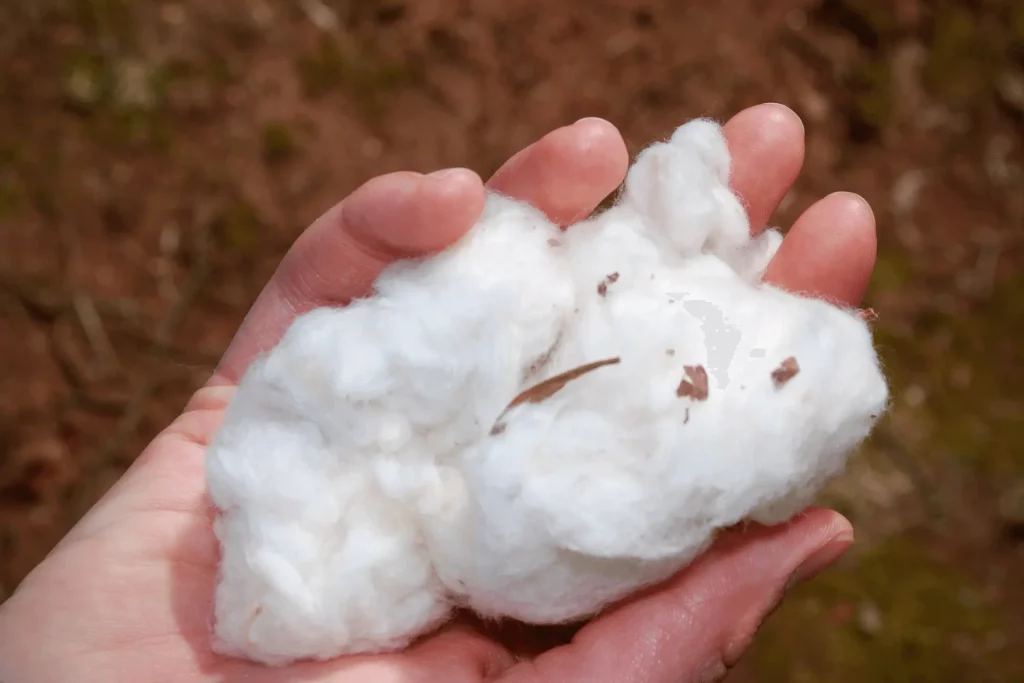
This Cotton is planted using an organic type always and without toxic chemicals. As well as also produced by hand. Fabric made of organic Pima cotton, naturally long-lasting texture makes the product for end use softer and pilling-resistant.
Combed Pima cotton:

This kind of Pima cotton has been combed to remove short, impure fibers, gives a soft and polished you, and is formed by making the threads before they turn into o adventure.
Additionally, it has superior power over other Cotton because it undergoes the next level in combing to remove dispensation, making it reliable, splendor, softer, and one of the most expensive Cotton.
Uses of Pima Cotton:
Pima cotton is used in various products due to its premium quality and splendor feel. Here are some of the most basic uses for Pima cotton are following:
- Clothing:
Pima cotton is often used in high-end clothing items such as t-shirts, dresses, Hoodies, and underwear due to its softness and durability. Due to its extra softness is also used in extravagant clothing like prince nightgowns, bath gowns, and luxury loungewear.
- Bedding:
Most people are picky about the feel of bedsheets and always think to put more fluffy and reliable Cotton between their covers. Pima cotton is a popular choice for bed sheets, pillowcases, and comforters due to its silky soft feel and resistance to pilling and wear.
- Towels:
Pima cotton towels are famous for their softness and permeability, making them a unique selection for bathroom linens such as hand towels, face towels, bath towels, and swimming towels.
- Baby Products:
Pima cotton is often used in baby clothes, blankets, and diapers due to its gentle feel and hypoallergenic properties.
- Home Textiles:
Pima cotton is also used in tablecloths, napkins, and other home textiles due to its durability and luxurious feel.
Additionally, Pima Cotton is more expensive. So, they are only utilized in commercial settings rather than industrial ones.
Due to its soft texture, cotton fabrics require special attention when washing. To assist with this, we have conducted trials of some successful methods for washing cotton sheets. Please take a look at this.
Cost of Pima Cotton Fabric:
The cost of Pima cotton fabric relies on these factors, including the quality of the Cotton, manufacturing country, fabric type, method used, and the quantity purchased. It would be double as much as Cotton with relatively short fibers.
Generally, Pima cotton is considered a luxury fabric and is more expensive than traditional Cotton. The extra cost is due to the longer and finer fibers of Pima cotton, which needed more care and attention during production.
On average, Pima cotton fabric can cost anywhere from $15 to $30 per yard, but prices can be higher or lower depending on the quality and type of material. For example, high-end Pima cotton clothing items can cost several hundred dollars, while Pima cotton sheets may vary from $50 to $200. Pima cotton fabric costs also rely on the quantity purchased, with bulk orders often resulting in a lower per-yard price.
Difference Between Regular Cotton and Pima Cotton:
Cotton and Pima cotton are both types of cotton plants. Still, there are some critical differences between the two:
Quality: Pima cotton is considered a higher-quality cotton because of its extra-long fibers that result in a softer, more robust, and more durable fabric.
Fiber length: Pima cotton fibers are longer than regular cotton fibers, which makes them less likely to break and results in a finer and smoother fabric.
Softness: Pima cotton is softer than regular Cotton, and its fibers are finer, resulting in a luxurious feel.
Durability: Pima cotton is more substantial than regular Cotton, making it more long-lasting and less inclined to pilling, fading, and shrinking.
Growing location: Pima cotton is primarily grown in the Southwestern United States, Peru, Australia, and a few other countries, while regular Cotton is grown in many countries worldwide.
Egyptian Cotton vs. Pima Cotton:
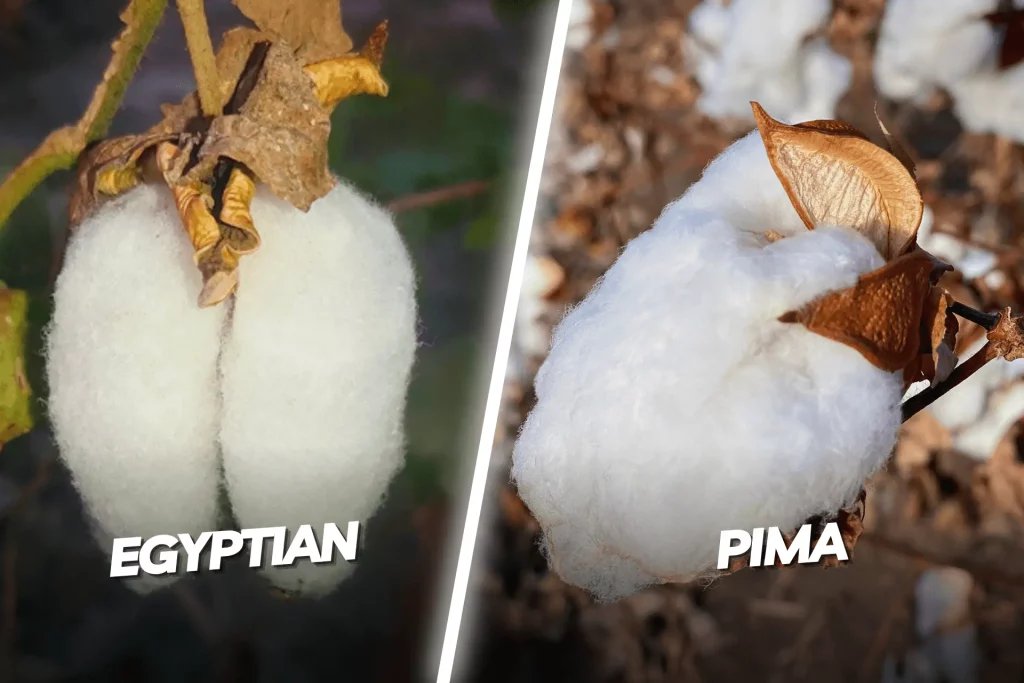
Pima and Egyptian Cotton are premium varieties famous for their high quality and luxurious feel.
Anyhow, here are some unique differences between these two kinds of Cotton:
Origin: Pima cotton is named after the Pima tribe in the Southwestern United States, where Cotton was first cultivated. Egyptian Cotton is Planted in the Nile River Valley in Egypt, whereas Pima Cotton comes from Peru, Australia, and south-eastern countries.
Fiber length: Egyptian cotton fibers are more extended than Pima cotton fibers, which contributes to their silky-smooth feel and durability.
Cost: Egyptian Cotton is typically more expensive than Pima cotton due in part to its longer fiber length and reputation for luxury.
Softness: Pima and Egyptian Cotton are known for their softness, but it is often considered to be the softer of the two dues due to their longer fiber length.
Availability: Pima cotton is widely available in the United States and other countries, while Egyptian Cotton is more limited.
Care & Appearance: Both types of Cotton are washable with no humiliation to the material. Egyptian Cotton can control a launder climate of up to 104 degrees Fahrenheit, while Pima cotton can be clean to 106 degrees Fahrenheit.
The Egyptian cotton touch is enormous fleece and plain, while Pima is just as fluffy, bragging a high permeable rate. Knowing the differences between the two will help you choose the right one.
Moreover, you need to know that Pima and Egyptian Cotton are high-quality varieties appropriate for different applications, such as clothing and bedding. The choice between the two conclusively relies on personal selection and factors such as cost, softness, and availability.
Frequently Asked Questions:
Are Pima cotton sheets good?
Pima cotton sheets are generally considered good because of their softness, durability, moisture absorbency, hypoallergenic, versatility, and comfort in their bedding.
Is pima cotton stretchy?
No, Pima cotton is not stretchable. Pima cotton is famous for its long staple (fiber length), resulting in a soft, long-lasting, and luxurious fabric. Anyhow, Pima cotton does not have the natural elasticity of fabrics like spandex or elastic.
As an outcome, it does not stretch or rebound like Cotton. It can be both positive or negative, depending on the needed application.
On the contrary, the lack of stretch makes Pima cotton perfect for applications where a stable, non-stretchy fabric is required, such as bedding or tablecloths. On the other hand, if time is needed in a material, Pima cotton may not be the best selection.
How does pima cotton pill?
Pilling occurs when small balls of fiber form on the fabric’s surface, resulting in a rough, bumpy texture. Various factors, including friction from wear, abrasion from washing and drying, and the type of fabric construction, can cause pilling.
How does pima cotton wrinkle?
Pima cotton, like all cotton fabrics, is disposed to wrinkling. The amount of wrinkling that occurs depends on several factors, including the type of fabric construction, the weight of the material, and how it is treated.
For example, lighter-weight Pima cotton fabrics are more likely to wrinkle than heavier-weight fabrics. Similarly, Pima cotton fabrics that have not been treated with wrinkle-resistant finishes are more likely to wrinkle than those that have been treated.
Can pima cotton be breathable?
Yes, Pima cotton is breathable. Breathability is an essential characteristic of clothing and bedding fabrics, as it allows air to circulate and helps regulate temperature. Pima cotton is a highly breathable fabric, which makes it a popular choice for summer clothing, sheets, and other bedding items. The long and delicate fibers of Pima cotton allow air to circulate freely, which helps soak up the liquid and keep you cool and pleasant.
Conclusion:
Pima cotton is a perfect quality cotton fabric. The Pima cotton is very soft. Along with this, it is something that lasts for a longer time. This means it can last you quite some time, and you do not have to buy new stuff too frequently.
In addition, this fabric is straightforward to wash. You do not have to use special techniques to dry it. It is also very convenient for you, and you can also look after it quickly. It was first produced and introduced to the world by the US. It was purely a US-assembled and made fabric.
Now countries like China and India are its most prominent producers. Today they hold the majority of their share in the market as they two are its most famous producers. As this fabric does not pill, it is soft and rich in texture, and most importantly, it’s a breathable fabric. It means you will always feel at ease when wearing this fabric.
It is a perfect fabric to be used mainly in warm regions. It is also used in bed sheets and clothes due to its extreme softness and gentleness. You will never regret buying this fabric for any of your use, be it personal or professional.
Pima cotton is known to produce a material that is too soft. The Pima cotton fibers are 1.4 inches to 2 inches long. It is also believed that Pima cotton has a 50 percent more life expectancy than other cotton products. Lastly, people with sensitive skin allergic to different kinds of fabric can wear Pima cotton stuff, which is also great for them. It is known to be one of the finest cottons on earth.

